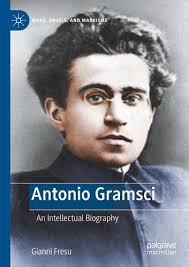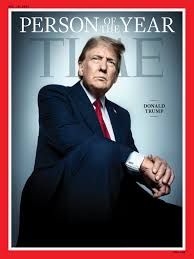
Pakistan’s strategic crossroads: From
In his prison letters, Italian Marxist philosopher, writer, and politician Antonio Gramsci wrote of the “pessimism of the intellect and optimism of the will,” likely borrowing the phrase from the Nobel laureate and French novelist Romain Rolland. It’s a sentiment that once captured the spirit of resistance, but today, it feels diluted, overused, and underpracticed.
Intellectual pessimism has grown powerful, while the will has withered, swallowed by massive, bureaucratic structures that consume popular agency like dragons. What we once called “the will of the people” has evaporated.
What remains is the will of a cynical ruler, subjugated in turn by a more cynical regime. The deeper the pessimism, the greater the state — and the more absent the collective will.
Just last month, Pakistan’s chief of army staff, Field Marshal Asim Munir, made a swift trip to the United States. He skipped the U.S. Army’s 250th anniversary parade and met directly with Donald Trump in a meeting spun by local media as an endorsement of Trump for the Nobel Peace Prize.
Munir, a seasoned military leader who played a key role in Pakistan’s missile and air operations against India in May 2025, had previously met with Iran’s chief of staff, General Mohammad Bagheri, who was to die in an Israeli airstrike on Tehran on June 13.
Two weeks later, on July 3, Pakistan’s air force commander, General Zaheer Ahmad Babar, also traveled to the U.S.
In Pakistan, a common saying defines the nation’s power triangle: “Allah, Army, America.” People view these three forces as the cornerstones of the state, with the military leading the way.
While the Pakistani military maintains deep ties with Washington, China has emerged as an increasingly influential actor.
The Sino-Pakistani alliance primarily stems from their shared rivalry with India. On July 4, Indian Deputy Army Chief General Rahul Singh alleged that China had aided Pakistan during recent tensions.
He also accused Turkey of providing military support, framing India as under siege from three fronts. Thus, Pakistan’s spiritual triad has morphed into a geopolitical one: religion via Turkey, the army via China, and the U.S. still standing firm.
Yet this balance is shifting, driven by neighborhood rivalries and global power realignments. Perhaps it’s not so much about Pakistan or Iran anymore, but about China — and Pakistan’s role within this broader equation.
Iran and Pakistan share a 909-kilometer (565-mile) border, but a proposed border fence aimed at curbing smuggling and insurgent movements has only covered 90 kilometers (56 miles).
Pakistan shows little urgency in completing it. One-third of Pakistan’s diesel is smuggled from Iran, with even aviation fuel traded illicitly, facilitated by border guards and traffickers on both sides.
Ethnic Baluch populations live along both sides of the border, where militant groups like the Baluch Liberation Army and Jaish al-Adl operate. Iran’s recent missile strike into Pakistani territory targeted positions linked to these groups.
Baluch militancy remains a major point of friction between Tehran and Islamabad. Recently, Pakistan has reportedly allowed ISIS-Khorasan elements to operate in the region to contain Baluch militancy, resulting in regular attacks against Iranian military targets.
Baluchistan remains one of Iran’s most underdeveloped and marginalized provinces — ethnically, religiously, and economically.
It is a delicate situation. Iran and Pakistan, despite diplomatic calm, have never truly been allies. During the CIA- and MI6-led Operation Cyclone (1979–1989), Afghan mujahideen were armed via Pakistan to fight Soviet-backed Kabul.
Following the Iranian Revolution, U.S. priorities shifted, and Washington quietly accepted Pakistan’s nuclear program.
U.S. National Security Adviser Zbigniew Brzezinski helped thaw relations between U.S. President Jimmy Carter and Pakistan’s Benazir Bhutto. Pakistan’s nuclear scientist A.Q. Khan later admitted to aiding Iran’s nuclear ambitions.
Although Pakistan sided with Iraq during the Iran-Iraq War, it still sold Iran Silkworm and Stinger missiles, even while stationing 40,000 troops in Saudi Arabia.
After the fall of the Shah, Pakistan’s strategic value to the U.S. skyrocketed. Post-9/11, Pakistan joined the U.S.-led coalition and facilitated NATO’s access to Afghanistan.
During Trump’s first term, U.S. aid to Pakistan was cut—initially in January 2018 with the suspension of nearly USD 2 billion in security assistance and later in September 2018 with the official cancellation of USD 300 million in military aid—only to be restored following the 2020 Doha peace talks.
Pakistan is home to an estimated 20 to 25 million Shia Muslims — approximately 10 to 15 percent of the total population — a community that often intensifies religious-political tensions.
Their presence significantly affects Iran–Pakistan relations because a large portion of the Iranian population, approximately 90 percent, is also Shia. A long-discussed peace pipeline between the two nations remains unbuilt.
Instead, their competition has spilled beyond the border, most visibly in the Caucasus, where Pakistan has aligned with Azerbaijan and Iran with India.
Afghanistan remains Pakistan’s strategic depth. The Durand Line, the official border between the two countries, has long been contested.
Pakistan’s intelligence services played a decisive role in supporting the Taliban, both before and after 2001. Pashtuns straddle both sides of the border, and Islamabad has often tried to leverage this ethnic connection, though calls for a cross-border Pashtun region have stirred unease.
As India expanded its influence in Afghanistan, Pakistan sought support from China to bolster its position. The transfer of Iran’s Chabahar port project to India further pushed Islamabad toward expanding the Gwadar corridor into Central Asia, with Beijing’s backing.
Tehran’s deepening ties with New Delhi, including a security pact signed during Indo-Pakistani tensions, irritated Pakistan. India’s alignment with Israel only complicated the picture. Iran’s strategy of balancing East and West didn’t sit well in Islamabad. While Pakistan took China’s side in the Caucasus, Iran leaned toward the West and Armenia.
In this web of shifting allegiances, Pakistan remains a pivotal player—and a potential “second Iran.” It is the only Muslim-majority nation with nuclear weapons and holds a firm anti-Israel stance.
It grapples with domestic insurgencies, radical Islamist groups, and ethnic unrest. Bordering both volatile Iran and unstable Afghanistan, Pakistan is a strategic flashpoint. Since the 1960s war with India, its ties with China have deepened.
Beijing has been central to Pakistan’s military development, and the China-Pakistan Economic Corridor (CPEC) serves as a vital link for China’s westward expansion. Despite part of Kashmir being under Chinese control, Islamabad has never used it as a point of dispute.
Today, Washington views Pakistan much as it did in 2001—as a fragile but essential player. Just as Pakistan once provided a gateway to Afghanistan, it now occupies a defined position as China’s ally, the U.S.’s reluctant partner, Israel’s critic, Iran’s rival, and Saudi Arabia’s friend. In a potential regional war involving Iran, Pakistan may play a subtle role, either by remaining silent or withholding support, despite domestic opposition to Israel.
But America has broader aims: countering China. Pakistan’s internal instability, proximity to radical Afghanistan, and tension with Iran could push it toward strategic recalibration. Such changes could reduce China’s influence, as already hinted by Pakistan’s distancing from Turkey in the Caucasus. In the event of full-scale war or peace talks with the West, Islamabad knows its turn will come. Recent Israeli threats signal this trajectory.
So the question remains: Will Pakistan cling to its old trinity of “Allah, Army, America”? Or is it drifting toward a new and volatile triad: “China, Conflict, Chaos”? Are we truly facing both the pessimism of the intellect and the pessimism of the will? Can a region so pregnant with these pessimists give birth to any form of optimism for us? Or is it that our fate in the Middle East is forever linked to bloodshed and displacement.
The Bridge features personal essays, commentary, and creative non-fiction that illuminate differences in perception between local and international coverage of news events, from the unique perspective of members of the Global Voices community. Views expressed do not necessarily represent the opinion of the community as a whole.




